What is the job outlook for architectural design?
The world of architecture has always stood at the fascinating intersection of creativity, engineering, and cultural expression. Today, however, that intersection is more dynamic than ever. Driven by a global push toward sustainability, the rapid pace of digital transformation, and the persistent needs of growing urban centers, the career path for an architectural designer is evolving in thrilling and challenging ways.
No longer is the profession defined solely by drafting and structure. Architectural design careers are rapidly expanding to encompass green building principles, smart city integration, and advanced digital design tools like virtual reality and AI. Professionals must be adaptable, blending core design principles with cutting-edge technology to meet modern demands for efficiency, resilience, and environmental responsibility.
This comprehensive article explores the current and future landscape of the field, offering data-driven insights on the current job outlook, the key industries hiring design talent, the essential skills needed to thrive, a look at salary expectations, and the major trends shaping the built environment for the next decade.
What Is the Current Job Outlook for Architectural Designers?
The job outlook for architectural designers and architects is projected to be stable, with significant opportunities arising from replacement needs and specialized growth areas. The U.S. Bureau of Labor Statistics (BLS) projects that employment of architects is expected to grow 4% from 2024 to 2034, which is about as fast as the average for all occupations.
While this growth figure appears modest, it translates to approximately 7,800 openings for architects projected each year, on average, over the decade. Crucially, a large portion of these openings results from the need to replace workers who transfer to different occupations or exit the labor force, such as to retire, ensuring a steady stream of job opportunities.
Factors Influencing Job Availability
The overall demand for architectural design talent is being shaped by several global and national factors:
Post-Pandemic Recovery and Redefinition: The construction and design sectors have seen a recovery, but with a fundamental shift. There is a strong, growing demand for designs related to residential spaces (redefining home offices and flexible living) and the adaptive reuse of existing commercial properties (converting vacant office spaces to residential or mixed-use).
Sustainability Policies and Green Building: Employment is expected to increase significantly for designers specializing in sustainable design and green building technology. Stricter energy efficiency codes and increased client focus on minimizing environmental footprints mean designers skilled in net-zero energy and LEED/WELL standards are highly sought after.
Infrastructure and Smart City Projects: Government spending on updating aging infrastructure, developing affordable housing, and pioneering smart city initiatives is driving consistent demand for designers who can handle large-scale, complex projects.
Digital Design Tools: The adoption of Building Information Modeling (BIM) software, and the early integration of Artificial Intelligence (AI) into design processes, is increasing efficiency. While technology streamlines some tasks, it also creates new, highly technical roles focused on digital collaboration, visualization, and data-driven design optimization.
Which Industries Hire the Most Architectural Designers?
While the classic architectural firm remains the top employer, the skillset of an architectural designer is now highly valued across a far broader spectrum of industries.
Top Employers and Core Sectors:
Architecture, Engineering, and Related Services: These traditional firms employ the vast majority of designers and architects (around 76% in the U.S.). They cover everything from commercial, institutional (healthcare, education), and residential projects.
Real Estate Developers & Construction Companies: Designers are increasingly brought in-house to manage the creative vision and coordination of large-scale projects from concept through completion, ensuring design integrity and efficiency.
Urban Planning Agencies and Government: Local, state, and national government agencies hire designers for city planning, transportation, infrastructure, and public works projects. Urban planning is a notable growth segment.
Specialized Design Studios: This includes interior design studios, which are increasingly involved in space planning and commercial fit-outs, and landscape architecture firms, focused on the vital link between buildings and the environment.
Emerging and High-Growth Opportunities:
Beyond the core sectors, architectural designers are finding unique roles in technology and specialized fields:
3D Visualization and Virtual Reality (VR) Design: Specialized studios are hiring designers exclusively to create photorealistic renderings and immersive VR walkthroughs. These roles require strong artistic skill paired with expert knowledge of rendering software and game engine technology.
Sustainable Housing and Energy Consulting: New firms dedicated to modular construction, prefabricated sustainable homes, and environmental performance analysis are actively hiring designers with expertise in materials, energy modeling, and climate-resilient design.
Global and Remote Collaboration: As a highly digital profession, international opportunities are expanding. Designers can work for global firms remotely, contributing to projects across continents, which emphasizes the need for fluency in international building codes and collaborative digital platforms.
What Skills Are in Demand for Architectural Design Careers?
Success in modern architectural design demands a powerful combination of technical mastery and innate creative ability. The ability to seamlessly blend these two categories defines the most sought-after talent.
Essential Technical Skills
Technical proficiency is the baseline for entry and advancement in the field. Digital literacy is paramount.
| Category | Key Software & Tools | Importance |
| BIM/Modeling | Revit, ArchiCAD, Vectorworks | Industry standard for collaborative design and project management. |
| CAD/Drafting | AutoCAD | Essential for construction documentation and baseline drawing. |
| 3D Modeling & Visualization | Rhino (with Grasshopper), SketchUp, Lumion, V-Ray, Enscape | Used for complex geometry, parametric design, and high-quality rendering. |
| Analysis | Computational Fluid Dynamics (CFD) software, Energy modeling tools, Sustainability analysis software | Critical for optimizing building performance, light, and ventilation. |
Essential Creative and Soft Skills
Technical skill must be paired with the core competencies that technology cannot replace.
Conceptual Design and Visualization: The ability to translate abstract ideas into tangible, compelling spatial concepts and to visually communicate these ideas clearly to clients and teams.
Problem-Solving: Architectural designers are fundamentally problem-solvers, navigating constraints in budget, site, materials, and regulations to deliver a functional and aesthetically pleasing solution.
Client Communication and Storytelling: Exceptional verbal and written communication is necessary to manage client expectations, present design schemes, and coordinate across multidisciplinary engineering and construction teams.
Environmental Design Awareness: Understanding passive design strategies, material lifecycles, and net-zero principles is now a core design competency, not just a specialization.
Continuous learning is vital. Designers should pursue professional certifications like LEED (Leadership in Energy and Environmental Design), WELL, or specialized Autodesk/BIM certifications to boost their competitive edge and earning potential.
How Much Do Architectural Designers Earn on Average?
Salaries for architectural designers can vary widely based on experience, specialization, firm size, and geographical location. However, data provides a clear benchmark for typical earning potential.
U.S. Salary Insights
According to recent data, the salary range in the United States generally falls between $60,000 and $85,000 per year for mid-level architectural designers, with a national average often cited around $74,500.
Entry-Level (0-3 years): Expected salaries typically range from $55,000 to $70,000, heavily dependent on location.
Mid-Level (4-9 years): Professionals with a few years of experience, often taking on project lead roles, can expect salaries from $70,000 to over $95,000.
Senior/Licensed Architects (10+ years): Licensed architects and senior designers with management responsibilities or unique specializations typically earn $90,000 to $140,000 annually, with top earners exceeding this range significantly.
Global Salary Comparison
While direct comparisons are complex due to economic factors and job role definitions, general insights show location-based variance:
Europe (Western/Northern): Salaries can vary significantly by country, but for architects, the average annual wage is often in the range of €43,500 to over €75,000 ($47,000 - $81,000 USD equivalent), with high-cost-of-living cities like London or Zurich offering higher compensation.
Asia (Major Cities): Salaries for experienced designers in major hubs like Singapore, Hong Kong, or Tokyo are competitive and often align with or approach U.S. mid-level ranges, though local markets and firm type dictate significant fluctuations.
Factors that Increase Earning Potential
Specialization: Designers specializing in high-demand fields such as BIM Management, Computational/Generative Design, Sustainable Design (Net-Zero/Passivhaus), or technical roles like Facade Design can command significantly higher salaries.
Licensing: Achieving a full architectural license (AIA, RIBA, etc.) is the most definitive path to senior roles and higher compensation, particularly in larger or highly regulated projects.
Firm Size and Location: Large international firms and those in major metropolitan areas (e.g., New York, San Francisco, London) typically offer higher compensation than smaller regional firms, though the cost of living must be factored in.
What Are Future Trends in the Field of Architectural Design?
The future of architectural design is a direct response to global crises and technological acceleration, focusing on resilience, efficiency, and human well-being. These trends will fundamentally redefine job roles and required skills in the next decade.
Green Architecture and Net-Zero Energy Buildings
This is arguably the single most important trend. The global push to reduce carbon emissions means green architecture and net-zero energy buildings will shift from being a specialization to a fundamental requirement. Designers must master:
Designing structures that produce as much energy as they consume.
Specifying low-carbon, regenerative, and locally sourced materials.
Applying advanced analysis to maximize passive solar gain, natural ventilation, and daylighting.
Integration of AI, AR/VR, and Generative Design
Technology is poised to transform the design workflow itself:
AI and Generative Design: AI tools will increasingly handle repetitive tasks and generate thousands of optimized design solutions based on complex constraints (cost, energy, sunlight). The designer's role will evolve from drafting to providing design direction, curating AI-generated options, and focusing on high-level creative problem-solving.
Augmented Reality (AR) and Virtual Reality (VR): These tools will move beyond simple visualization to become collaborative platforms, allowing designers, engineers, and clients to walk through digital models together, refine designs in real-time, and catch conflicts before construction begins.
Urban Revitalization and Adaptive Reuse
As the function of commercial buildings changes (especially post-pandemic office spaces), the demand for designers skilled in adaptive reuse—converting existing structures for a new purpose—will soar. This requires creativity, deep knowledge of structural systems, and a sustainable mindset. Furthermore, affordable housing and smart city infrastructure (intelligent grids, integrated public transit) remain high-priority sectors driven by population growth and urban density.
Design for Health and Resilience
The lessons of global health crises and climate change mean that resilient infrastructure and healthy building design are major trends. Designers will need to prioritize:
Materials and systems that support indoor air quality and occupant well-being (aligned with WELL certification).
Designs that can withstand and recover from extreme weather events and natural disasters.
Flexible and modular spaces that can rapidly adapt to changing needs, whether for health emergencies or evolving work models.
Conclusion
The job outlook for architectural designers is strong, though undeniably evolving. This is a field that is resilient and essential, driven by the timeless human need for shelter and the urgent modern necessity of a sustainable future.
Success in this career demands more than just a talented portfolio; it requires a potent blend of creativity, technical skill, and, above all, adaptability. Architectural designers who embrace new digital tools like AI, prioritize environmental design, and see complex urban and social challenges as opportunities for innovation are the ones best positioned to lead the profession. To remain competitive and future-proof your career, commit to staying updated with design technology and leading sustainability trends. The built environment of tomorrow is waiting to be imagined by the designers of today.
Do you have any questions about specific roles within architectural design, or would you like to explore the impact of a particular technology like BIM or AI further?




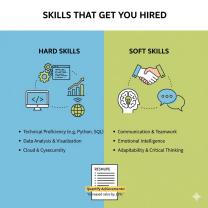


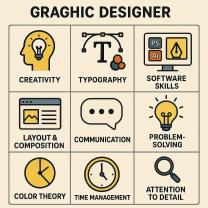

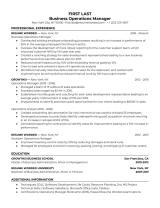

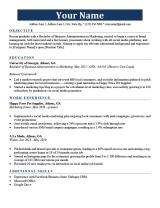
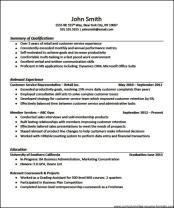

UrbanFuture_Arch
on October 11, 2025As a designer specializing in adaptive reuse, I can confirm the demand is through the roof. We need to stop building new and start reinventing the old.
BIM_Guru_NYC
on October 11, 2025The salary insights are spot on, especially how specialization like BIM management can drastically increase earning potential. Great motivation for young architects!